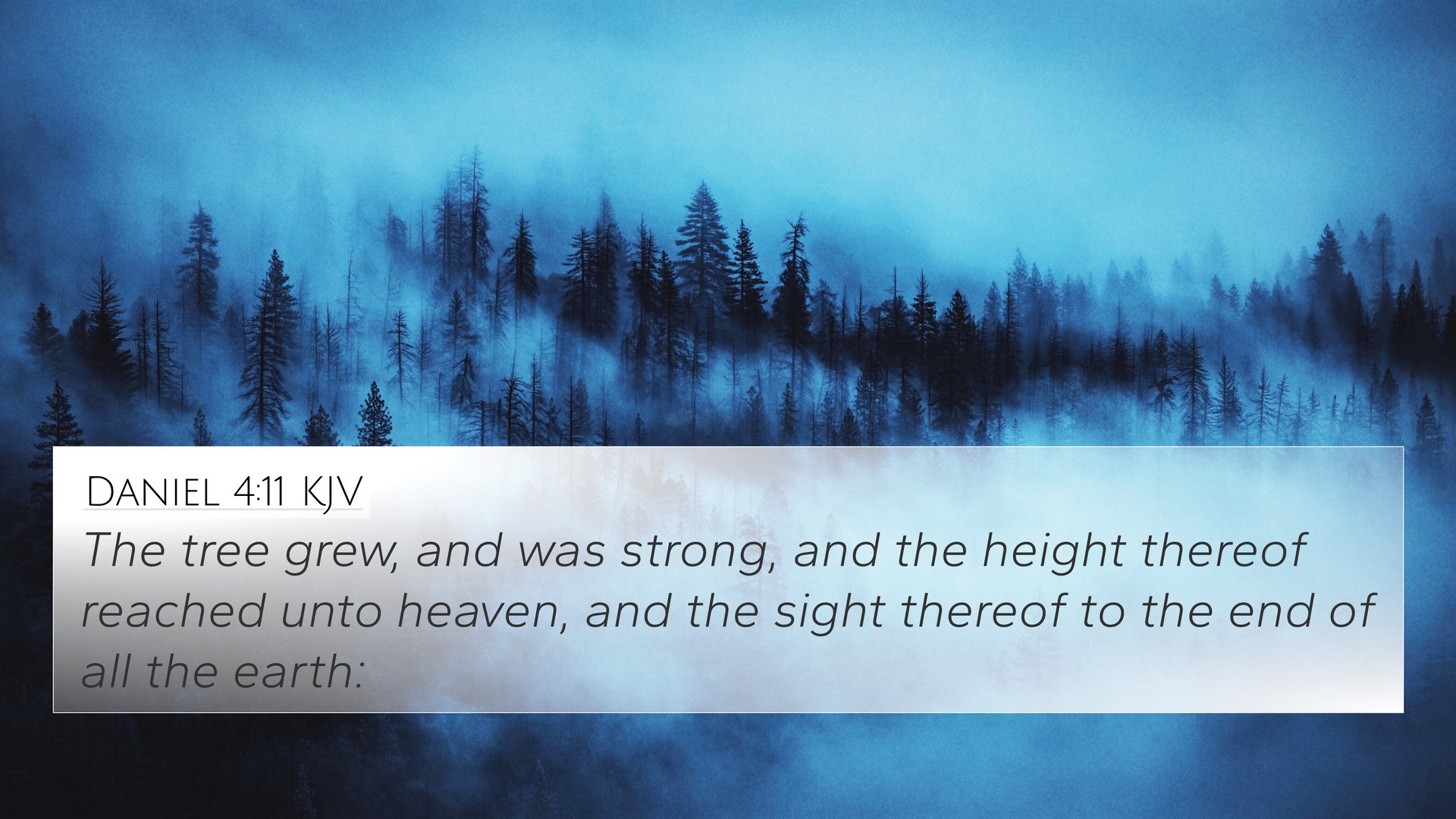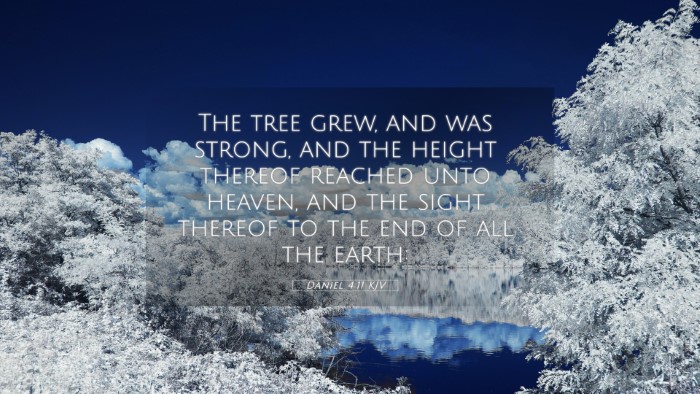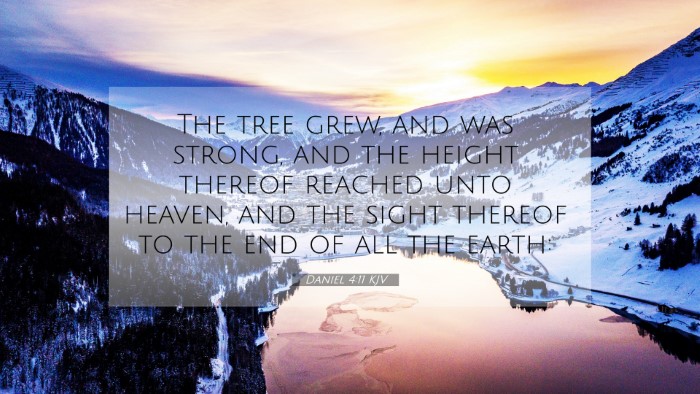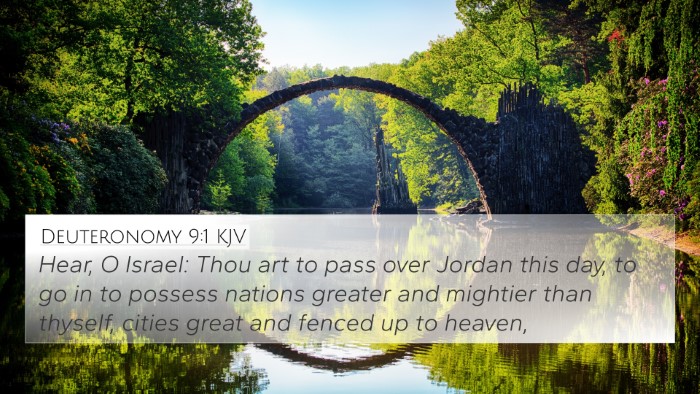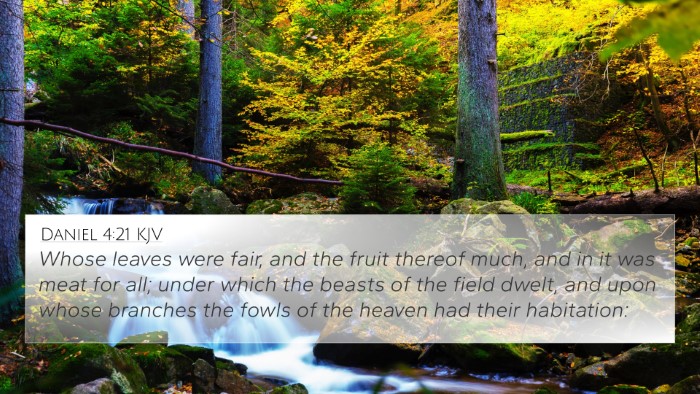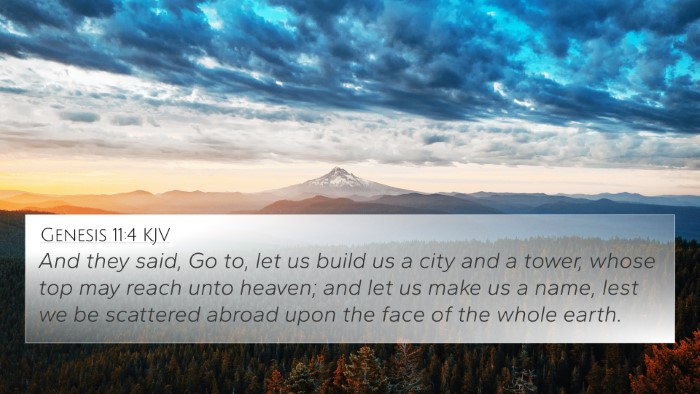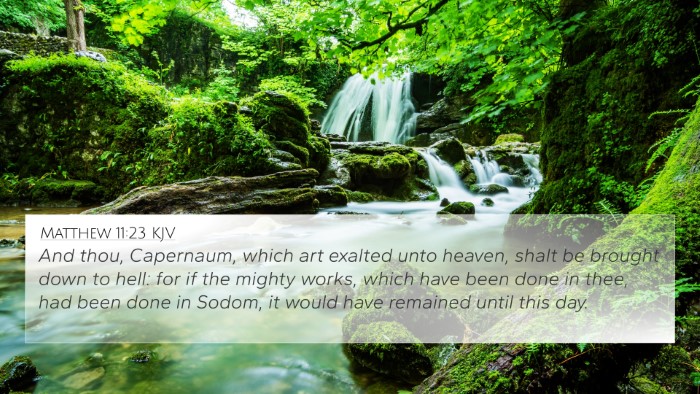Bible Verse Meaning: Daniel 4:11
Daniel 4:11: "The tree grew and was strong, and its height reached to the heavens, and it could be seen to the ends of all the earth."
This verse is part of a significant dream that King Nebuchadnezzar had, which is interpreted by Daniel. In this dream, the tree represents the king himself and the greatness of his kingdom. The imagery of the tree reaching to the heavens signifies the extent of Nebuchadnezzar's power and influence over the nations of the earth.
Commentary Insights:
-
Matthew Henry:
Henry explains that the tree symbolizes Nebuchadnezzar's dominion, his prosperity, and the wide reach of his authority. The height of the tree suggests not only greatness in power but also a potential for pride, which ultimately leads to the king's downfall.
-
Albert Barnes:
Barnes highlights the visible nature of the tree, emphasizing that just as the tree is conspicuous, so is Nebuchadnezzar's reign. The universal visibility of the tree signifies the reputation that precedes the king, establishing his importance among other rulers.
-
Adam Clarke:
Clarke elaborates on the tree's representation of a kingdom that flourishes and becomes the talk of all nations. He draws a parallel between this vision and the divine authority under which such greatness is achieved, suggesting a temporary and changing state rather than eternal security.
Cross-References:
Daniel 4:11 contains connections to various other scriptures that illustrate the themes of power, pride, and divine authority:
- Ezekiel 31:3-4: This passage discusses a giant tree likened to Pharaoh, further reinforcing the symbolism of great leaders and their eventual downfall.
- Luke 1:52: "He has brought down the mighty from their thrones and exalted those of humble estate," indicating God's sovereignty over thrones and nations.
- Proverbs 16:18: "Pride goes before destruction, and a haughty spirit before a fall," highlighting the dangers of pride that is also present in King Nebuchadnezzar's story.
- Revelation 18:2: "Fallen, fallen is Babylon the great!" emphasizing the inevitability of downfall for great empires.
- Isaiah 14:13-14: This passage refers to the fall of the proud, which mirrors the humbling that Nebuchadnezzar will experience.
- Job 20:5: “That the triumphing of the wicked is short,” supporting the transient nature of prideful power.
- Habakkuk 2:4: "The righteous shall live by his faith," contrasting the fate of the proud with the faithful who rely on God.
Understanding the Thematic Connections:
The great tree of Daniel serves as a profound symbol intertwined with multiple biblical themes:
- Pride and Humility: This theme of pride leading to a fall echoes throughout scripture. Daniel's interpretation cautions against the arrogance that can accompany power.
- Divine Sovereignty: The rise and fall of kingdoms is ultimately under God’s control, a concept that connects with verses in both the Old and New Testaments.
- Visibility of Influence: The idea that great leaders cannot hide their influence encourages a deeper understanding of public faith and witness.
In Conclusion:
In examining Daniel 4:11 through various commentaries, it becomes clear that this verse speaks volumes about the nature of power, the risks associated with pride, and the overarching sovereignty of God. The cross-references offer a robust framework for understanding how this single verse relates to broader biblical themes and narratives.
This understanding aids in creating Bible verse connections through cross-referencing Biblical texts, and it provides a foundation for further theological study. By exploring scriptural cross-referencing, one can uncover rich veins of meaning and draw comparisons across both the Old and New Testaments, enhancing knowledge and appreciation of the divine message present in scripture.
